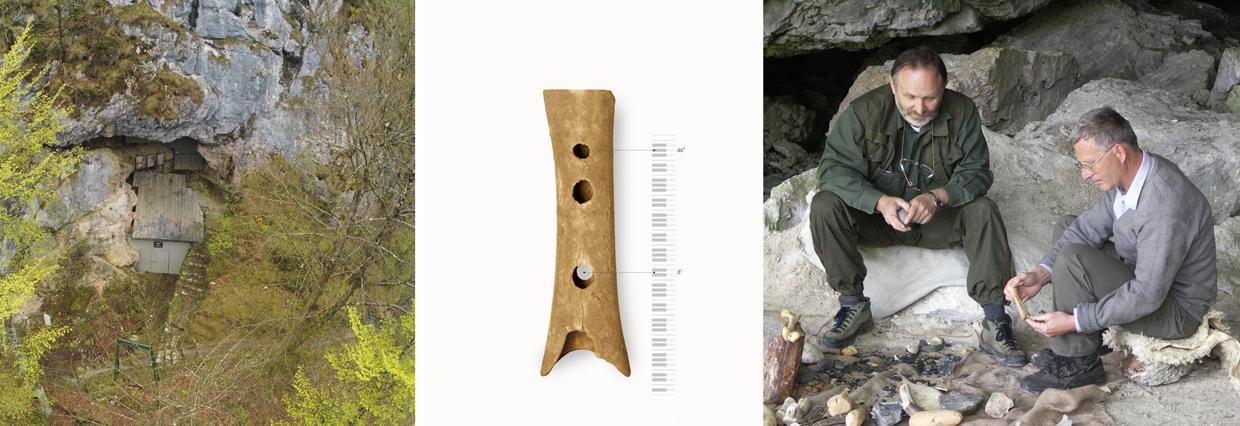
On the 30th anniversary of the discovery of the Neanderthal flute
Published on: June 19, 2025It has been 30 years since the discovery of the Neanderthal flute in the Palaeolithic cave site of Divje babe I. The Divje babe I cave is located below the northeren edge of the Šebrelje plateau (Idrija-Cerkno hills, western Slovenia).
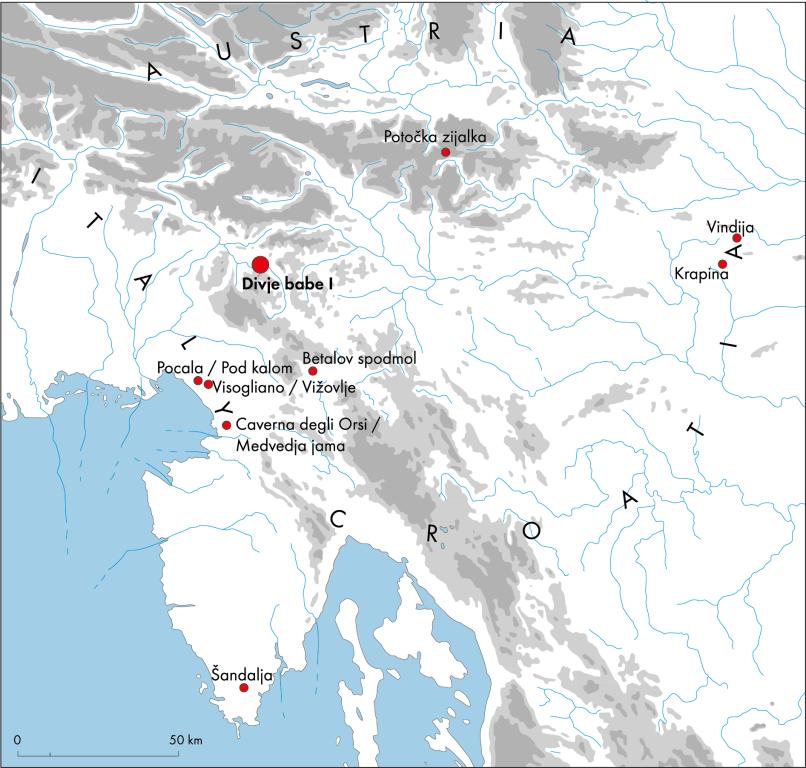
Geographical location of the site and the most important palaeolithic sites in the region.
t was systematically excavated between 1980 and 1999 by the Institute of Archaeology ZRC SAZU, first under the direction of Mitja Brodar and then under the direction of Ivan Turk. The cave contains layers from the Late Pleistocene, including 13 Middle Palaeolithic (Mousterian) horizons (radiometrically dated to between 115,000 and 40,000 years ago) and an Early Upper Palaeolithic (Aurignacian) horizon (dated to around 40,000 years ago).
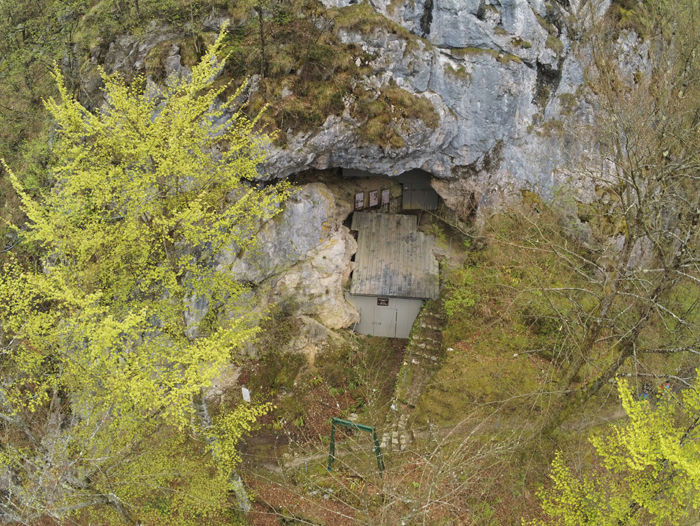
The Divje babe I cave (Photo: Miha Skoberne)
The flute was excavated on 18 July 1995 by the archaeologist Janez Dirjec. The unusually perforated femur of a young cave bear aroused great interest among experts as soon as the suspicion arose that the find could be a flute. As such finds from the Middle Palaeolithic were not known until then, many influential researchers ruled out the possibility that it was a Neanderthal musical instrument.
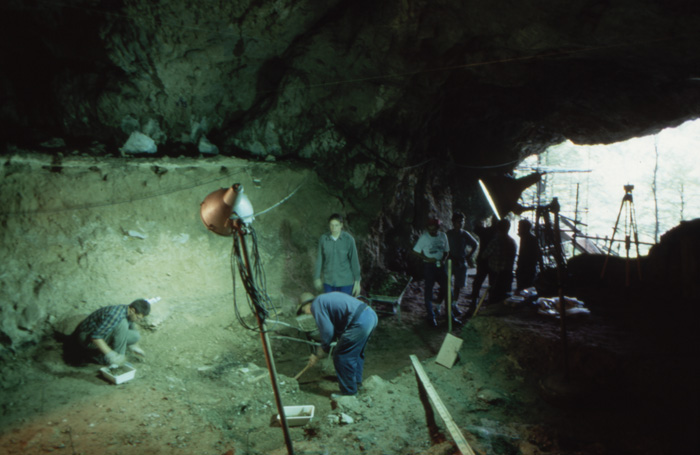
Slavko Ciglenečki visited the cave on 18 July 1995, the day the flute was discovered. He took a photo showing the fireplace between the excavators Janez Dirjec (right) and Boris Kavur (left), near which the flute was discovered shortly afterwards (Photo: Slavko Ciglenečki).
Ivan Turk and his colleagues conducted a series of experiments in which they pierced fresh femurs of bear cubs with metal casts of teeth from various carnivores, as well as experiments in which they pierced the bones with replicas of stone and bone tools found in the Middle Palaeolithic layers of Divje babe I. The experiments disproved the possibility that the holes could have been made by carnivores and showed that Neanderthals could have made identical holes in the bones as on the flute with their tools.
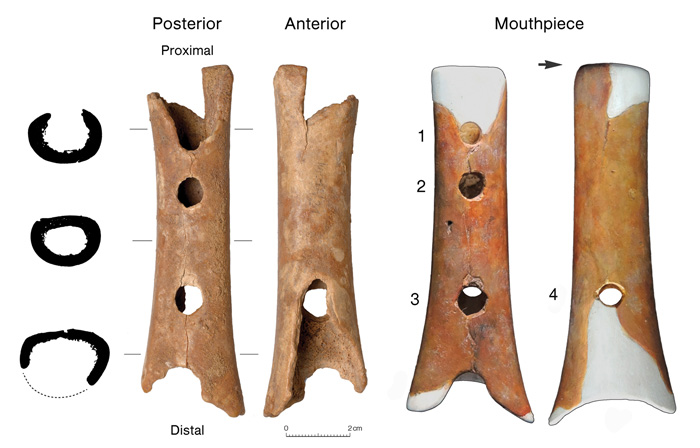
Neanderthal flute and reconstruction (Photo: Tomaž Lauko, NMS)
The musical experiments carried out on the reconstructions of the flute by Dr Drago Kunej from the Institute of Ethnomusicology ZRC SAZU and later by academic musician Ljuben Dimkaroski showed that the find is a powerful wind instrument that is the result of deliberate and planned production. Based on the dating of the layer in which the flute was found, it is estimated to be between 50,000 and 60,000 years old, making it the oldest known musical instrument.
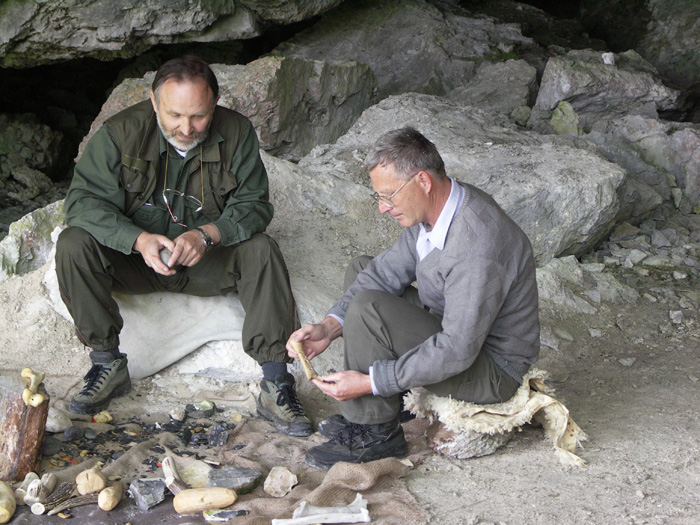
Experimental archaeologist Giuliano Bastiani and Ivan Turk demonstrate how to make holes in a fresh bear femur using stone and bone tools (Photo: Matija Turk)
To mark the 30th anniversary of the discovery, the National Museum of Slovenia is presenting the exhibition "Neanderthal flute, 60,000 years of music", which was realised in cooperation with the Institute of Archaeology ZRC SAZU.
Demonstration of playing (a reconstruction) of a flute:
https://www.youtube.com/watch?v=sHy9FOblt7Y